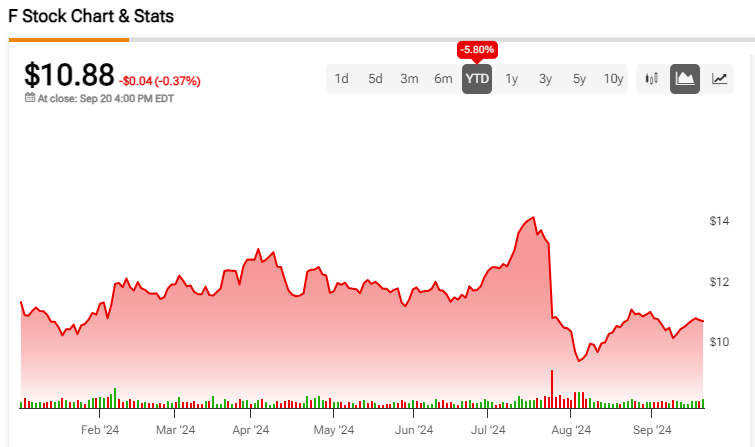As the quest for AI dominance unfolds, the battleground between silicon giants Advanced Micro Devices (AMD) and NVIDIA (NVDA) is ablaze, with both unleashing new firepower at Computex 2024.
AMD finds itself in the position of the underdog, chasing after NVIDIA’s strong lead in the AI arena, fueled by the robust spending in enterprise digital transformation. Projections by IDC paint a vibrant picture, with global spending on digital transformation expected to swell to nearly $4 trillion by 2027, showcasing a robust CAGR of 16.2% between 2022 and 2027.
Gartner’s estimations hint at a 19.1% CAGR for AI software spending, reaching a formidable $297 billion by 2027. Fueling this surge is the expected shift, with Generative AI (GenAI) software expenditure forecasted to skyrocket from 8% in 2023 to a commanding 35% by 2027. Deloitte anticipates a 30% surge in enterprise spending on GenAI, projected to hit $16 billion in 2023.
This multi-billion-dollar bonanza beckons enticingly to both chip behemoths, promising prospects of substantial growth.
AMD & NVIDIA: Racing Against Time
Both AMD and NVIDIA are setting their sights on a rapid rhythm of AI chip launches to outpace their rivals.
Advancements at Computex 2024
At Computex 2024, AMD unfurled its Instinct accelerator roadmap, featuring the upcoming Instinct MI325X accelerator, slated for debut in the fourth quarter of 2024. The MI325X boasts 288GB of lightning-fast HBM3E memory, extending AMD’s GenAI performance spectrum.
The imminent CDNA 4 architecture, earmarked for 2025, will power the AMD Instinct MI350 Series, aiming to deliver up to 35 times superior AI inference performance compared to the AMD Instinct MI300 Series with AMD CDNA 3. Looking further ahead, the CDNA “Next” architecture will underpin the MI400 series accelerators scheduled for 2026.
AMD has also introduced the fifth generation of EPYC server processors (Turin), leveraging the Zen 5 core. Its repertoire expands with the launch of the Ryzen AI 300 Series, the third iteration of AMD AI-powered mobile processors, and Ryzen 9000 Series processors for laptops and desktop PCs.
Meanwhile, NVIDIA expanded its arsenal with the unveiling of the next-generation AI chip architecture, Rubin, harnessing HBM4. This announcement follows the earlier Blackwell revelation in March, presently in production and expected to ship to clients later this year. Not content with the status quo, NVIDIA plans to roll out new AI chip models annually instead of the prior biennial timeline. Additionally, NVIDIA introduced a plethora of fresh tools and software models at Computex 2024.
Ever responsive to the cutthroat competition in the AI chip arena and keen on safeguarding its primacy, NVIDIA is now hounded not just by AMD and Intel, but also by initiatives from the likes of Microsoft, Alphabet, and Meta Platforms.
Tech Titans Intensify AI Arms Race
Microsoft’s Maia 100 stands as a testament to the tech giant’s AI ambitions, designed to tackle large language model training and inference tasks. Running on a 5-nanometer TSMC process, the Maia 100 wields an impressive 105 billion transistors.
Alphabet’s Google, on the other hand, has ushered in the Axion central processing unit (CPU), bolstering its AI endeavors in data centers. These Axion processors represent Google’s debut tailored Arm-based CPUs, offering robust performance and energy efficiency with instances boasting up to 30% higher performance than the fastest general-purpose Arm-based instances.
Following Google’s lead, Meta unveiled the next iteration of the Meta Training and Inference Accelerator (MTIA), a set of customized chips designed for Meta’s AI workloads. The MTIA range is poised to underpin new generative AI products and services, recommendation systems, and advanced AI research, marked by an 8×8 processing element grid delivering enhanced compute performance (3.5x over MTIA v1) and sparse compute performance.
Conclusion
NVIDIA has set the markets ablaze, boasting a staggering 121.4% year-to-date return, outshining growth rates of AMD, Microsoft, and Alphabet at 13.2%, 10.4%, and 23.5%, respectively.
While NVDA revels in its AI dominion, courtesy of next-gen chips wielding towering computational prowess that are an enterprise favorite, AMD’s recent product launches position it favorably to challenge NVDA not just in data centers, but also in the expanding AI-enabled consumer PC universe over the long haul.
NVIDIA presently flaunts a Zacks Rank #1 (Strong Buy) coupled with an A-rated Growth Score, a mix that beckons as a promising investment avenue, according to the Zacks methodology. Backed by a B-tier Momentum Score, NVDA glimmers as an enticing prospect for investors. On the flip side, prospective AMD investors may want to bide their time for a more opportune entry point, as the company currently holds a Zacks Rank #3 (Hold). Furthermore, AMD trades at a premium, with a forward 12-month P/E of 40.11X juxtaposed against the Zacks Electronics – Semiconductors industry’s 32.92X and NVIDIA’s 38.12X, hinting at a stretched valuation.



